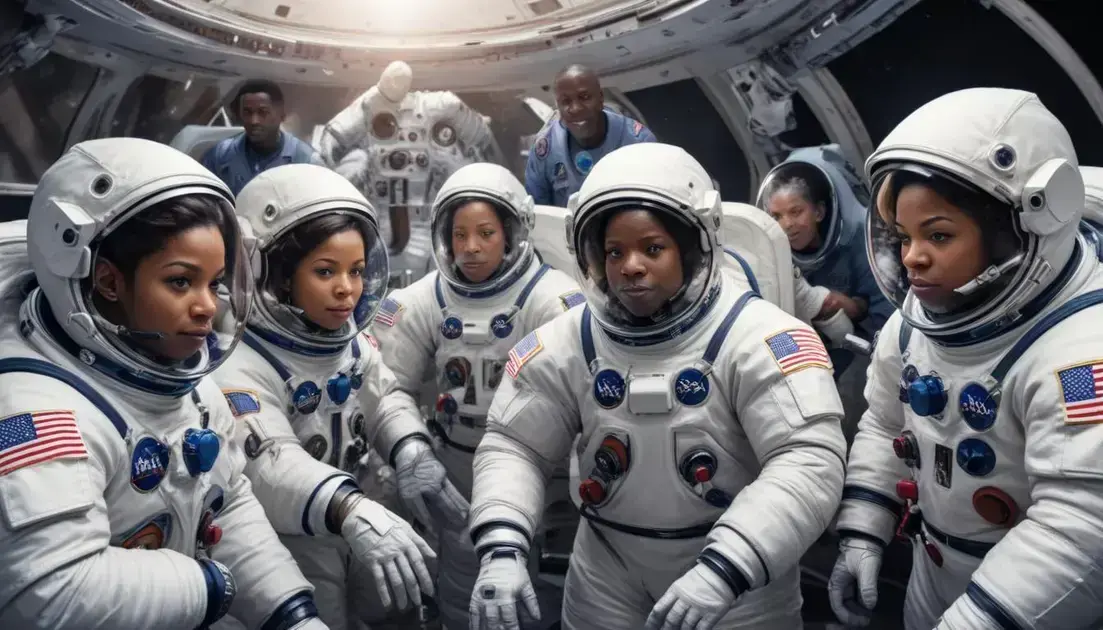NASA shifts focus on Artemis mission diversity goals
NASA’s recent removal of specific DEI goals from its Artemis mission strategy raises concerns about inclusivity, highlighting the need for innovative approaches to maintain diversity in future space exploration.
NASA’s recent changes have shifted its focus on diversifying the Artemis mission, impacting efforts to include marginalized groups. NASA has removed specific DEI goals, raising concerns about the future of inclusion in space travel.
NASA’s new direction regarding DEI initiatives
NASA’s recent adjustments to its approach towards Diversity, Equity, and Inclusion (DEI) initiatives in the Artemis program have sparked significant discussion. Previously, the agency aimed to enhance representation within its ranks, actively pursuing goals that aligned with broader societal expectations. However, with the recent decision to remove specific DEI objectives, the focus has now shifted towards a more streamlined operational framework.
Implications for Inclusion: This change could have profound implications for how NASA engages with underrepresented communities. By stepping back from formal DEI targets, the agency may inadvertently signal a retreat from its commitment to fostering a diverse workforce. Stakeholders express concern that this could undermine the progress made in cultivating an inclusive environment, where varied perspectives are essential.
The funding and strategy realignment not only impacts internal operations but also alters external partnerships. Companies and organizations collaborating with NASA may need to adjust their own DEI strategies, reconsidering how they align with the agency’s evolving mission. This situation invites a broader dialogue on the role of inclusivity in space exploration, and how these changes may affect future missions.
Financial implications of removing DEI aims
The decision by NASA to remove specific Diversity, Equity, and Inclusion (DEI) aims from its Artemis mission strategies carries significant financial implications. Funding allocations dedicated to DEI initiatives may be redirected toward core operational elements. This shift raises questions regarding long-term funding for programs that prioritize inclusivity.
Organizations investing in partnerships with NASA might reassess their financial commitments in light of this change. Companies focused on promoting an inclusive workforce are likely to seek alignment with agencies that reflect similar values. The absence of formal DEI goals could deter potential collaborators who prioritize social responsibility.
Moreover, the removal of these aims might affect eligibility for certain grants and funding from external sources. Many funding bodies are increasingly emphasizing the importance of DEI in their criteria. As a result, NASA’s shift could complicate its ability to secure external funding, which is vital for sustaining diverse projects.
In the broader aerospace industry, other companies may view this shift as a signal that inclusivity is becoming less critical in operational frameworks. This could catalyze a trends reversal where DEI initiatives are deprioritized, affecting diversity across the entire sector.
Responses from NASA staff and stakeholders
The recent changes to NASA’s DEI approach have elicited strong reactions from both staff and stakeholders. Employees who have dedicated their efforts to fostering a diverse and inclusive environment express concern over the removal of specific DEI goals. For many, these objectives were not merely initiatives; they represented a commitment to inclusivity that aligned with NASA’s broader mission.
Staff Reactions: Internal feedback indicates a mix of disappointment and confusion. Many employees worry that the lack of formal DEI initiatives may hinder recruitment efforts aimed at underrepresented groups. The sentiment among some team members reflects a fear of losing momentum gained over recent years regarding workplace diversity.
Stakeholders, including advocacy groups and industry partners, have voiced their alerts on the potential ramifications. Their perspectives highlight the importance of maintaining a focus on equity within space exploration. Some stakeholders call for a dialogue between NASA leadership and advocates to understand the implications of this decision better.
This turbulence may lead to discussions on how NASA can navigate challenges while still valuing diversity. Moreover, it emphasizes the need for ongoing communication between the agency and its employees to address concerns and reestablish trust in the mission.
Future of inclusivity in space exploration
The future of inclusivity in space exploration is a pivotal topic as organizations like NASA navigate new strategies. While the removal of specific DEI goals raises concerns, it also opens discussions about the potential for innovative approaches to inclusivity. Companies and agencies must consider how to integrate diverse perspectives meaningfully.
As space missions become more complex, fostering a diverse team is essential for problem-solving and creativity. Different viewpoints contribute to better decision-making and drive breakthroughs in technology and strategy. This reality emphasizes the importance of actively seeking diverse talents in recruitment, even without formal DEI targets.
Engaging underrepresented communities will require partnerships with educational institutions and outreach programs. By cultivating an interest in STEM fields among diverse groups, agencies can build a pipeline of talent prepared to contribute to future missions. Such initiatives align with global movements emphasizing equity in various fields, including space exploration.
Furthermore, organizations must maintain transparency about their inclusivity goals, even if they are not formally established. Keeping communication channels open allows for feedback and continuous improvement in creating an inclusive environment. This adaptability will be crucial in ensuring that future space exploration reflects the diversity of perspectives and ideas.
Looking Ahead: The Path to Inclusivity in Space Exploration
The journey toward greater inclusivity in space exploration is crucial as we move forward. Organizations must recognize the value of diverse perspectives in tackling complex challenges. While recent changes at NASA may have created uncertainty, they also provide an opportunity to rethink how to foster an inclusive environment.
Engagement and outreach will be key in building pathways for underrepresented communities in STEM fields. By working together, agencies and educational institutions can inspire future generations of explorers. This initiative will not only enrich the workforce but also enhance creativity and innovation in space missions.
Continuous dialogue and transparency will help strengthen relationships among stakeholders and employees. By keeping communication open, NASA can rebuild trust and remain committed to inclusivity, even if specific targets are set aside. Embracing these changes can foster a future where everyone has a place in space exploration.
Ultimately, the vision of an inclusive spacefaring society is within reach. Prioritizing diversity will pave the way for groundbreaking discoveries and advancements, making space exploration a true representation of humanity.
Frequently Asked Questions
Why is inclusivity important in space exploration?
Inclusivity fosters diverse perspectives that enhance problem-solving and innovation, crucial for tackling the complex challenges in space exploration.
What changes did NASA make regarding its DEI initiatives?
NASA removed specific DEI goals from its Artemis mission strategy, leading to discussions about how to maintain inclusivity without formal targets.
How can organizations engage underrepresented communities in STEM?
Organizations can partner with educational institutions and create outreach programs to inspire and cultivate interest in STEM fields among diverse groups.
What impact does diversity have on team performance in space missions?
Diverse teams bring varied viewpoints that enhance creativity and improve decision-making, leading to better outcomes in complex space missions.
How can NASA rebuild trust with its employees after recent changes?
By fostering open communication, actively seeking feedback, and demonstrating a commitment to inclusivity, NASA can rebuild trust and engagement with its workforce.
What is the future of inclusivity in the space industry?
The future will focus on innovative strategies to integrate diversity within the workforce, ensuring that space exploration reflects a broad range of ideas and experiences.






